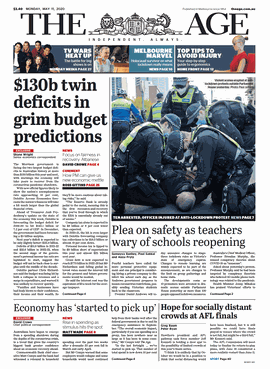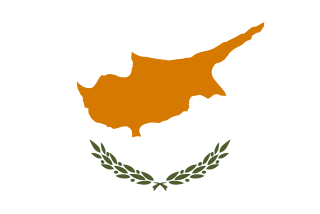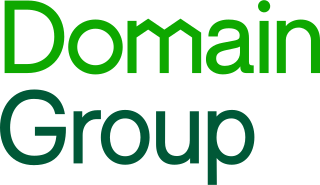History
The Australian Financial Review newspaper started as a weekly publication in 1951, published by John Fairfax & Sons. The paper's main objective was to inform the Australian public on business life and news. [5]
In 1961, the AFR converted to a bi-weekly, and then established itself as the first daily newspaper by 1963. [6] Despite other newspapers claiming the title of the first daily national paper, Maxwell Newton was the editor in charge of taking the Financial Review from a bi-weekly to the first daily national paper. [7] During 1961–62, the AFR's primary competitor was The Australian Financial Times, which was in operation for less than 12 months. In the 1960s and 1970s, the AFR developed a strong readership amongst a specialist business audience due to its neutral stance on domestic government policies. [5] In the 1970s, despite the AFR's reputation as a national business daily, many saw it as the primary competitor for The Australian given its high proportion of readers in the AB demographic. [7]
In 1995, Fairfax launched the Australian Financial Review Magazine in response to its growing readership across a wide-ranging audience. [8] The magazine was published to cover topics other than business including leisure, politics, travel, sports, fashion, and other peripheral topics. [9] In December 2019, the magazine recorded an average issue readership of 326,000. [10] Since its launch in 1995, the AFR Magazine has won the 'Best Newspaper Inserted Magazine' (2013-2019), 'Newspaper Inserted Brand of the Year' (2019) and Mumbrella's 'Special Issue of the Year' (2019). [8]
The magazine's founding was followed by the launch of the AFR's website in the same year, which started as a free online source of financial news. [11]
In 1997, the AFR launched its Weekend Edition which extended the paper's publications into the weekend, with an explicit focus of targeting the growing readership base by providing news articles outside of the traditional finance setting. [8]
In 2016, the AFR launched mobile and iPad compatible applications to provide its digital subscribers more accessibility to its news platform. This was aimed at allowing cross-platform accessibility without having to download two separate applications across different device platforms. [12] The application carries similar features to the website including sections such as: Street Talk and Rear Window. The product management team decided to revamp the app due to the wide uptake of smartphones in the Australian market, and to improve their user-interface experience. The UTS Business School was the launch partner for the app, providing logistical advice on the app's delivery. [13] The app's subscription price is included in the 'all premium digital subscription' bundle.
The Australian Financial Review has grown its product offerings since its beginnings as a finance newsroom. It has consistently been well received by the journalism sector as one of the most high-quality newsrooms across Australia. [14] Since the 2000s, the AFR has launched BOSS (magazine for business leadership and strategy) and the Sophisticated Traveller magazine. In 2019, the Australian Financial Review recorded double-digit subscriber growth, as it continued to market its newspaper as the driver of Australian business-people's success and ambitions. [3] In 2020, due to the newspaper company's expansion efforts across different readership bases, the AFR reached 2.647m Australians a month. [3]
Evolution of Paywall System
The AFR first introduced its paywall in 2006, charging online users to view its articles – a payment model that had not yet been utilised by any other Australian newspaper firm. [15] The switch to a paywall was done because the newspaper company thought it could further monetise its niche business audience who could afford it. [16] Following this change, the AFR continued to adjust the pricing of its subscription due to low subscriber growth. [17]
In 2011, it newly introduced a freemium paywall in which only a small portion of articles were free. It has been noted that the AFR's website locks approximately 86% of its online content behind a paywall, higher than its closest competitor the National Business Review . [17] This was aimed at increasing its digital readership which in 2011 amounted to 6,000 subscribers. [18] In addition, it was later determined that the AFR's failures in attracting online subscribers was due to its paywall being too expensive. Its 2012 price of $59 AUD was notably higher than other international mastheads, including The New York Times which was priced at $37.84 AUD. [17] As a result, the AFR has since lowered its digital subscription price to $29.50 AUD.
Nine Entertainment merger
The mega-cap deal that saw Nine Entertainment and Fairfax Media merge was inspired by initial chats between Hugh Marks (Nine CEO) and Nick Falloon (Fairfax chairman). [19] The pair discussed how the two companies' assets could synergise, improve efficiencies, save costs and increase scale. During the lead up to the merger, there were a few roadblocks. In 2016, the proposed merger was not feasible due to government legislation surrounding media ownership. [20] In addition, Nine Entertainment's board believed that its share price was undervalued and thus wanted to delay any acquisition until its fair value had been reflected. Amongst the delays in talks between the two parties, Fairfax had other suitors including private equity groups TPG Capital and Hellman & Friedman, which ended up walking away from the table. [21]
In 2018, Nine Entertainment's board re-entered into talks with Fairfax of a potential merger after its share price had jumped following an upbeat earnings report. [22] The proposed structure of the takeover was 0.3627 Nine shares plus $0.025 AUD per Fairfax share, composing a cash plus scrip deal. This represented a 21.9% takeover premium to Fairfax's last close, and valued Fairfax at $2313.8mm AUD. [2] Once the deal was made, it was reported that Fairfax's portfolio newspapers, including the AFR, would maintain independence from Nine's media groups. As part of the proposed deal, Hugh Marks took over corporate control of the combined group with Fairfax CEO, Greg Hywood, stepping down.
The combined entity in 2018 was forecasted to have approximately 6,000 employees (inclusive of all the duplicate roles made redundant), major resources across all media types including print, TV, radio and online; and $3 billion in revenue. [19]
The proposed merger was also put under review by the Australian Competition & Consumer Commission (ACCC) on antitrust measures. [23] It was announced in November 2018 that the ACCC would not oppose the merger. The investigation looked at the merger's impact on the online news industry's competition and involved contacting numerous stakeholders. It was noted that the merger would most likely reduce competition in the domestic media market, but that it was not in breach of the Competition and Consumer Act. The main point of divergence between the two business' assets was that Nine Entertainment's news assets provided mass market news coverage whereas Fairfax Media's news assets provided more specialist coverage. [24]
Despite the ACCC's ruling, there were a few stakeholders who voiced their concerns about the merger's impact on the Australian media industry's competitive landscape. [23] Union groups such as the Media Entertainment and Arts Alliance, and the Journalists' union warned the ACCC that the mega-cap takeover would threaten the editorial independence of Fairfax Media's portfolio newspaper companies. Former prime minister Paul Keating also voiced his criticisms labelling the ACCC's decision as "appalling", considering that a more concentrated media industry would reduce coverage of city-specific political issues. [25]
Reporting
Reporting stance
During 1975 to 1983, when The Australian widely articulated its political stance on conservative liberalism, it had been noted that the AFR also promoted neo-liberalism through its news coverage and editorials, exerting influence on the business sphere of Australia and its elitist readership base. [32] The newspaper has also been labelled as one of the propagators of radical liberalism during the 1970s – 1980s, shaping the policy debate surrounding market deregulation at that time. [32] This was in line with the overarching political stance of all Fairfax Holdings owned newspapers, including The Sydney Morning Herald , which in the 1970s was also right-leaning in its political views. [33] However, contrasting to The Australian, the AFR was still perceived as a newspaper with a strong sense of integrity in reporting facts, despite its editorial style leaning towards conservative business ideals.
In the wake of the 1987 stock market crash, the Australian news media sector was blamed for overlooking corporate corruption and wrongdoings, whilst publishing primarily favourable news articles handed to them from corporate PR teams. [6] Also during this time, The National Times whIch was Australia's leading financial investigative journalism newspaper, shut down after the stock market crash. So during the 2000s, following the financial market failures and economic downturn of the 1990s, the AFR's reporting focus steered more towards business investigative journalism, scrutinising big corporations, government power and corruption. [6] This was viewed as the AFR making reparations for its lack of scrutiny over the corporate sector in the lead-up to the stock market crash.
One major factor that allowed the AFR to undertake deep corporate investigations was that it did not need advertising revenue to stay afloat – its cover price was sufficient. On the other hand, all other daily mastheads needed company advertising to stay profitable. This afforded the AFR's editors the flexibility to pursue and publish news articles that shed a negative light on major companies without needing to be concerned about its financial impacts.
In the early 2010s, the AFR's political stance has been labelled as neutral. [34] During the controversial 2013 tax debate regarding taxes for 'extraordinary' profits generated by mining companies, major mastheads from regions with high mining interests had almost four-fold the number of negative articles compared to positive articles. The Australian, the biggest national daily, had a large number of both positive and negative articles, but had a limited number of neutral articles. Out of all the daily mastheads, the AFR published the most articles surrounding the tax debate and also the most number of neutral articles. [34]













